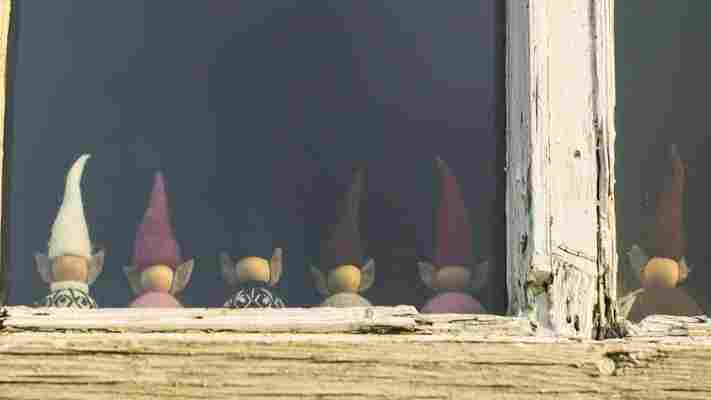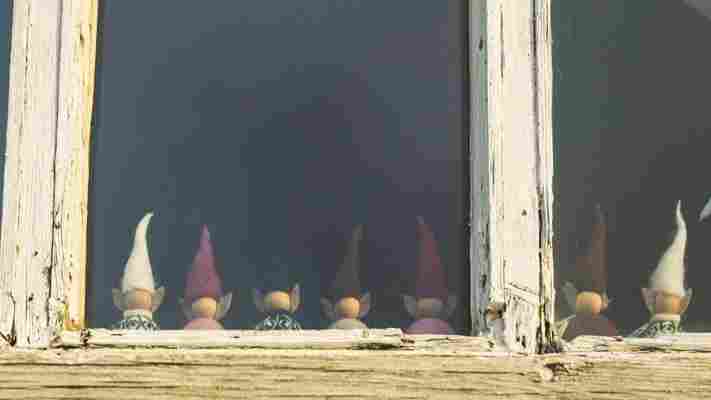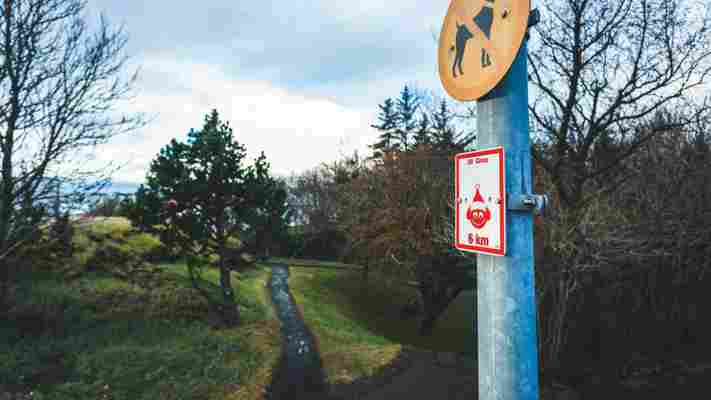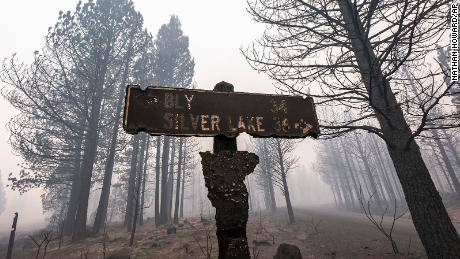The elusive ‘hidden people’ of Iceland
When she was nine years old, Jófríður Ákadóttir was punished for disturbing an elf. Or at least, she believes she was.

“We would play in this field between apartment buildings in Reykjavík,” the Icelandic singer/songwriter told me. “There was one rock bigger than all the other ones that towered over the field. We were certain it’s an elf rock, and you shouldn’t disturb the elves. It was twice my size, and with some struggle I managed to get up there. My friends warned me it was a bad idea. And then as I had my moment on top of it, I jumped down and as I landed I bit the inside of my mouth so blood was pouring out of it. I ran home crying, and never touched that rock again.”
I never touched that rock again
Ákadóttir’s story is hardly unique. Iceland is a country riddled with stories of elves (smaller, human-like creatures with pointy ears), ‘hidden people’ (interdimensional human-like beings, called huldufólk in Icelandic) and fairies (if you’re thinking Tinkerbell, you’re not far off). They’re believed to be peaceful creatures, co-existing alongside humans and indulging in the same day-to-day activities, including fishing, farming, raising families and – if the legends are any indication – occasionally lending a helping hand to humans who otherwise would die without intervention.

According to a 2007 study by the University of Iceland, more than 60% of Icelanders believe that elves could be more than a fairy tale (Credit: Ian Young)
You may also be interested in: • The unexpected philosophy Icelanders live by • The last guardians of a python spirit • The country that cuddles with a purpose
According to a 2007 study by the University of Iceland, an estimated 62% of the nation believe that the existence of these beings is more than a fairy tale. However, this statistic covers both sincere believers and agnostics who lean toward the ‘why not’ end of the spectrum.
It’s the latter, open-minded-but-questioning camp that Sigtryggur Baldursson, a Reykjavik local, falls into. His mother says she grew up on an Icelandic farm with invisible playmates that other children couldn’t see. (An anecdote he delivered with a disclaimer that it might have been a case of “souped-up imaginary friends”.) But it’s the story of his grandmother’s brush with terminal cancer and her resulting recovery that makes him truly wonder if his mother was friends with the huldufólk.
“My mother, one night she wakes up to see doctors come into the room and start treating my grandmother,” he recalled. “She was following the conversation of the nurse and two doctors. They were talking among each other and one of the doctors said, ‘Well I think this is going to be OK’. My mother was kind of relieved, and went back to sleep. In the morning, she asks her grandmother, who was just waking up: ‘Did you speak to the doctors last night?’. Her grandmother said ‘What doctors? There were no doctors here’. The thing is, after this, she had a miraculous recovery.”

Huldufólk, or ‘hidden people’, are believed to be peaceful creatures who indulge in the same daily activities as humans (Credit: Ian Young)
Magnús Skarphéðinsson has a theory. Skarphéðinsson runs Reykjavik’s only Elfschool , an extension of the Paranormal Foundation of Iceland that introduces travellers to the topic of Iceland’s magical creatures. Billed as a lecture (used in the loosest sense of the word), it’s more of an open forum to discuss magic and folklore, held over pancakes and coffee in a library lined with elf paraphernalia, including human-sized, light-up statues.
The Enlightenment had a terrible price – it killed faith
Tossing candy bars to the class and cracking jokes about elf sex, Skarphéðinsson confessed that he’s never met an elf or huldufólk in person. (“In the elf world, they think I’m a maniac!” he cackles.) However, he’s interviewed more than 900 Icelanders who have. That number includes 75 who claim to have struck up a friendship with an elf, and 35 who claim to have been invited into elf homes. It’s more than simply believing the experience of your friend, or brother or mother. Iceland, he argues, has been uniquely primed to be open to non-traditional ideas, making it a safe place for elves to reveal themselves. Even though the Elfschool is a playful take on what Skarphéðinsson sees as an important subject, he is very serious when discussing the topic of Iceland’s declining belief in elves.
“We would be living in a totally different society if the Enlightenment had not started in the 1700s,” he told a recent Friday afternoon class. “But the Enlightenment had a terrible price. It killed faith. Faith is one of the glues that keep civilisation together. Not only did it kill faith, it killed myth. And psychic ability. Many people believe in elves in Iceland because we were isolated. The Enlightenment didn’t come to Iceland until 1941 when the American army invaded Iceland. Then we had the Enlightenment and it began cleaning the elves away.”
Magnús Skarphéðinsson, who run’s Reykjavík’s Elfschool, has met 35 people who say they have been invited into elf homes (Credit: Ian Young)
Icelanders who do believe in elves seem unconcerned with it sitting side-by-side with atheism or traditional religion. During his class, Skarphéðinsson tells stories of Icelandic priests baptising huldufólk children (a move, he theorises, to build a bridge between the two communities); and the Icelandic Fairytales handbook he passes out to the class contains a story of The Elfchurch of Tungustapi, about a human discovering an elf church.
Baldursson recalled that his mother, a devout Christian, felt similarly on the subject. “There’s a lot in the spiritual life I have no idea about,” Baldursson remembers her commenting. “But I believe that I’m a friend of Christ and he’s a friend of mine, and I’ll be fine.”
Believing in a world outside of our own expands the horizons of what our world can be
Pam Shaffer, a licensed therapist, argues that believing in something bigger than yourself can inspire other positive beliefs. If your world is already wide enough to include elves, why not think even bigger?
“Magical thinking is actually an advantage for humans in general,” she explained. “Even if you haven’t interacted with elves or huldufólk yourself, believing that they are out there can expand your world view, which leads to flexibility of thought and open-mindedness. This is beneficial because being mentally and emotionally flexible helps people overcome obstacles in life and have better relationships overall. Essentially, believing in a world outside of our own expands the horizons of what our world can be.”
It is believed that elves and huldufólk make their homes inside large rocks found mainly on beaches and lava fields (Credit: Ian Young)
It’s difficult to determine how many Icelanders hold a sincere belief of elves or huldufólk. Certainly, the very fact some do believe has become tied up with the country’s ever-expanding tourism market. Next to puffins, they’re a popular souvenir subject – and ‘seers’ willing to take tourists on walks to meet elves has become a cottage industry.
However, the idea that daily life in Iceland is designed to be elf-inclusive is highly simplified.
In 2013, a group led by Ragnhildur Jónsdóttir protested a road that was scheduled to cut through the homes of a huldufólk community located in a lava field. (It’s generally believed that elves and huldufólk make their homes inside large rocks found mainly on beaches and lava fields – which Skarphéðinsson says are more stable between dimensions.) The construction was halted while the government worked to find an amicable solution. However, G Pétur Matthíasson, head of communication at the Icelandic Road and Coastal Administration, sees the change of plans as a practical move, not one motivated by belief.
“One of the protesters, she was doing the elf angle,” he explained of the protest and resolution. “She was interested in this one big rock that was in the line of the road. We then look at it, not through believing in elves, but believing that elves or hidden people are part of our cultural heritage. We looked at this big rock formation and saw that it was unique, and decided that because we could move [the road], we would try to do that.”
Pam Shaffer: “Magical thinking is actually an advantage for humans in general” (Credit: Ian Young)
Certainly, in a population of around 340,000 people, taking your neighbour’s beliefs and values into consideration is important in keeping the peace. In the Reykjavík suburb of Hafnarfjörður, for example, elf shrines (small altars, sometimes with candles) and undisturbed lava rocks dot the yards of houses, particularly those surrounding Hellisgerdi Park – a spot known for its extensive elf activity, and the location of many elf-seer walks. There’s even a large stone in the yard of Þjóðkirkjan, the neighbourhood’s branch of the Icelandic national church, that has been left in place rather than risk disturbing any inhabitants. These, along with cartoonish signs mentioning the presence of elves, serve as a reminder of Iceland’s otherworldly presence, even as daily life grinds on.
Michael Nawrocki, the American co-director of the forthcoming documentary Iceland: A Story of Belief, walked the same streets while filming. He describes encountering a similar level of acceptance in the belief of huldufólk during his first trip to the country in 2016.
We look at it, not through believing in elves, but believing that elves or hidden people are part of our cultural heritage
“Say you’re a homeowner and you have a rock formation in your backyard that has been designated as an elf rock, and you want to put in a hot tub. You start to break that elf rock apart, and your neighbour comes out and says ‘What are you doing, that’s an elf rock?’,” he said, recounting one of the stories he uncovered while filming.
“That’s going to mean trouble for you. About 80-90% of Icelanders will leave [the rock] alone. Part of that is that belief that maybe there’s something there. Part of that is a cultural heritage. I’ll forgo my hot tub for my elf rock.”
Most Icelanders will leave rocks believed to be elf rocks undisturbed (Credit: Ian Young)
But for believers like Skarphéðinsson, the existence of elves is more than just a chance to play ‘what if’. He describes his belief as an opportunity to apply science and reason to some of life’s biggest questions – and embrace the fact that no-one will ever have all the answers.
“We don’t have a clue why these creatures are pulled back and forth between dimensions,” he said. “The only thing you can do is to collect all people’s experiences. The only source of information is to find all possible witnesses and ask them in detail: What do they look like? What were they wearing? What is their opinion on God and eternity? Why are they here?”
At this, he becomes less serious and takes a moment to laugh at himself.
“My friends have asked the elves ‘Why don’t you invite Magnús?’,” he said, chuckling at their reply: “‘We can’t. We’re afraid we’d never get rid of him again’.”
Join more than three million BBC Travel fans by liking us on Facebook , or follow us on Twitter and Instagram .
If you liked this story, sign up for the weekly bbc.com features newsletter called "If You Only Read 6 Things This Week". A handpicked selection of stories from BBC Future, Culture, Capital and Travel, delivered to your inbox every Friday.












Write a Comment